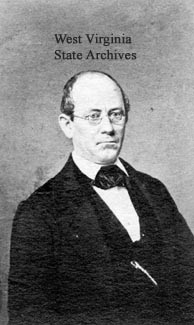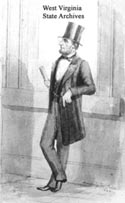



| On November 15, 1860, Virginia Governor John Letcher called the
General Assembly into extra session to begin on January 7, 1861. The Virginia General
Assembly called for a state convention to determine Virginia's course in the crisis. 152 delegates
were elected, and they convened in Richmond on February 13.
Upon his election as president of the convention, John Janney of Loudoun County informed his fellow delegates, "It is our duty on an occasion like this to elevate ourselves into an atmosphere, in which party passion and prejudice cannot exist - to conduct all our deliberations with calmness and wisdom, and to maintain, with inflexible firmness, whatever position we may find it necessary to assume." |
 |
 |
For the first two months of the convention, moderate sentiment prevailed,
and the general mood of the delegates was against secession. However, on April 12, 1861, Fort
Sumter surrendered to Confederate forces, and three days later, President Abraham Lincoln
issued a call for 75,000 troops to put down the rebellion. These events convinced the majority of
delegates that the time had come for Virginia to leave the Union. On April 17, 1861, delegates
passed an Ordinance of Secession by a vote of 88 to 55. Led by John Carlile, many western delegates withdrew from the convention, returned to western Virginia, and began planning opposition to the ordinance, which would be voted on by the citizens of the state on May 23.
Primary Documents:Biographies of Western Virginia Delegates to the Richmond Convention"A Bit of History:" Recollections of the Richmond Convention Virginia Ordinance of Secession Votes on the Ordinance of Secession |
